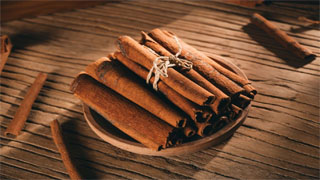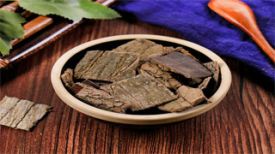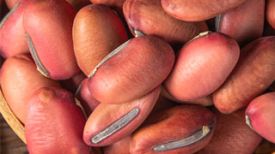
1. Aliases
Mountain cinnamon, soil cinnamon, soil cinnamon, mountain jade cinnamon, and mountain cinnamon bark.2. Plant morphology
Chuangui: a tree, 25 meters high, with a diameter at breast height of 30 centimeters. Branches cylindrical, leaves alternate or nearly opposite, oval or oval shaped, elongated at the base, gradually narrowing down to the petiole, green above, shiny and hairless, gray green below, dull. The petiole is 10-15 millimeters long. Panicles axillary, few flowered, cymose, pedunculate, both hairless or sparsely pubescent along the rachis. The flowers are white, with filamentous pedicels and finely pilose. The inner and outer sides of the perianth are covered with filamentous pubescence, capable of producing 9 stamens. The perianth is covered with pubescence, and the anthers are elongated in shape. The anthers have 4 chambers and are outward facing. Degenerated stamens 3, located in the innermost whorl, with a stalk. Ovary ovoid, nearly 1 millimeter long, style thickened, 3 millimeters long. Mature fruit not seen; The top of the fruit tray is flattened, with extremely short lobes at the edge. The flowering period is from April to May, and the fruiting period is after June.
Tianzhugui: an evergreen tree, reaching a height of 15 meters. The bark is gray brown and smooth. The leaves are nearly opposite, and those on the upper part of the branches are mutual; Petiole 6-11 millimeters long, hairless; Leaves ovate or oblong lanceolate, apex acute or gradually acute, entire, green and shiny above, gray green below, leathery. The panicle is axillary, with 3-5 flowers arranged in a clustered umbrella shape at the end of the total peduncle; The perianth tube is inverted conical, the perianth lobes are 6, and the stamens are 9. It is hidden inside, and the filaments are pilose; Ovary ovoid, slightly pubescent, style slightly longer than ovary, stigma disc-shaped. The fruit is round in shape, about 7 millimeters long and 5 millimeters in diameter, hairless; Fruit tray shallow cup-shaped, top open, entire or with shallow round teeth. The flowering period is from April to May, and the fruiting period is from July to September.
Yinxiang: Refer to "Yinxiang Skin".
3. Origin distribution
Chuangui: Born in valleys and mountain forests. Distributed south of the Qinling Mountains in Shaanxi, Jiangxi, central and southern regions, Sichuan, and Guizhou. Tianzhugui: Born in evergreen broad-leaved forests. Distributed in Jiangsu, Zhejiang, Anhui, Fujian, Jiangxi, and Taiwan. Yinxiang: Refer to "Yinxiang Skin".
4. Harvesting and processing
Peel the bark in winter, dry it in the shade, remove impurities and seminal bark, and crush it when used.
5. Characteristics of medicinal herbs
Cinnamomum officinale: The bark is cylindrical or irregularly shaped pieces of varying sizes, usually 30-60 centimeters long and 2-4 millimeters thick. The outer skin is grayish brown, densely covered with inconspicuous small pores or grayish white spots; The inner surface is reddish brown or grayish red, smooth with indistinct fine vertical lines, and nail scratches show oil marks. Hard and brittle, easy to break, and uneven cross-section. The air is fragrant and cool, slightly like camphor, with a slightly sweet and spicy taste. Chuan Gui Pi: Irregular pieces, 1-3 millimeters thick. The outer skin is brown or brownish, rough, with punctate or elliptical protrusions in the skin pores, or with grayish brown spots; The inner surface is gray brown or brown. Hard in texture, with a light brown or brown cross-section. The aroma is weak, with a slight camphor scent, and the taste is spicy, cool, and slightly spicy. Yin Fragrance Skin: Refer to "Yin Fragrance Skin".
6. Nature, taste, and meridian tropism
Warm in nature, with a spicy and sweet taste. Return to the Stomach Meridian, Large Intestine Meridian, Liver Meridian, and Kidney Meridian.
7. Effect and function
Warm the spleen and stomach, warm the liver and kidneys, dispel cold and relieve pain, disperse blood stasis and reduce swelling. Belonging to warm internal medicine.
8. Clinical applications
Internal administration: decoction, dosage 6-12 grams. External use: In moderation, apply with water or alcohol as a seasoning. Indications: Cold abdominal pain, vomiting and diarrhea, soreness and coldness in the waist and knees, cold hernia and abdominal pain, cold dampness and pain, stasis and dysmenorrhea, dysentery, intestinal wind, bruises and swelling.
9. Pharmacological research
① Sedative effect. ② Cooling effect. ③ Hypotension effect. ④ Gastrointestinal effect. ⑤ Intestinal excitation. ⑥ Tongjing effect. ⑦ Sterilization effect. ⑧ Nourishing stomach and expelling wind The expectorant and antitussive effects Diuretic effect Anti radiation effect. æ Anti complement effect Regulate blood sugar.
10. Chemical composition
The bark of Cinnamomum officinale contains volatile oil, and the main components of the oil include hydroquinone, eugenol, and methyl eugenol. The leaves contain volatile oil, and the oil contains camphor, eugenol, 1,8-eucalyptol, etc. The bark of Sichuan cinnamon tree contains volatile oil, mainly composed of eugenol, 1,8-eucalyptol, cinnamaldehyde, etc.
11. Taboos for use
Cinnamon has a hot nature and is suitable for consumption in cool weather. Avoid eating cinnamon in summer; Due to the heat promoting and blood activating properties of cinnamon, it can easily damage fetal gas, so pregnant women must eat it with caution; People with yin deficiency and excessive fire, as well as blood heat bleeding, should not consume it; Patients with excessive menstruation, pelvic inflammatory disease, sore throat, and other febrile diseases should avoid eating. People with a history of blood loss and nocturnal emissions should also abstain from eating. Not suitable for pregnant women.
12. Compatibility prescription
① Treating stomach pain and abdominal pain: 15-21g of Cinnamomum officinale. Jianfu. (Fujian Chinese Herbal Medicine)
② To treat stomach cold, nausea, and vomiting: Cinnamomum cassia, cardamom, and osmanthus are divided into equal parts. Study the details together. 4.5 grams each time, twice a day, taken with hot water. (Anhui Chinese Herbal Medicine)
③ Treating postpartum lower abdominal cold pain: 6g of Cinnamomum cassia, 9g of Angelica sinensis and Corydalis yanhusuo each, 4.5g of Fennel and 6g of Chuanxiong. Jianfu. (Anhui Chinese Herbal Medicine)
④ Treatment of falls and injuries: bark of dried roots of Cinnamomum officinale. At the end of the research, mix water or wine and apply it to the area. (Fujian Chinese Herbal Medicine)
The content of the article is for clinical reference only. Non professionals in traditional Chinese medicine are not allowed to try medication.


